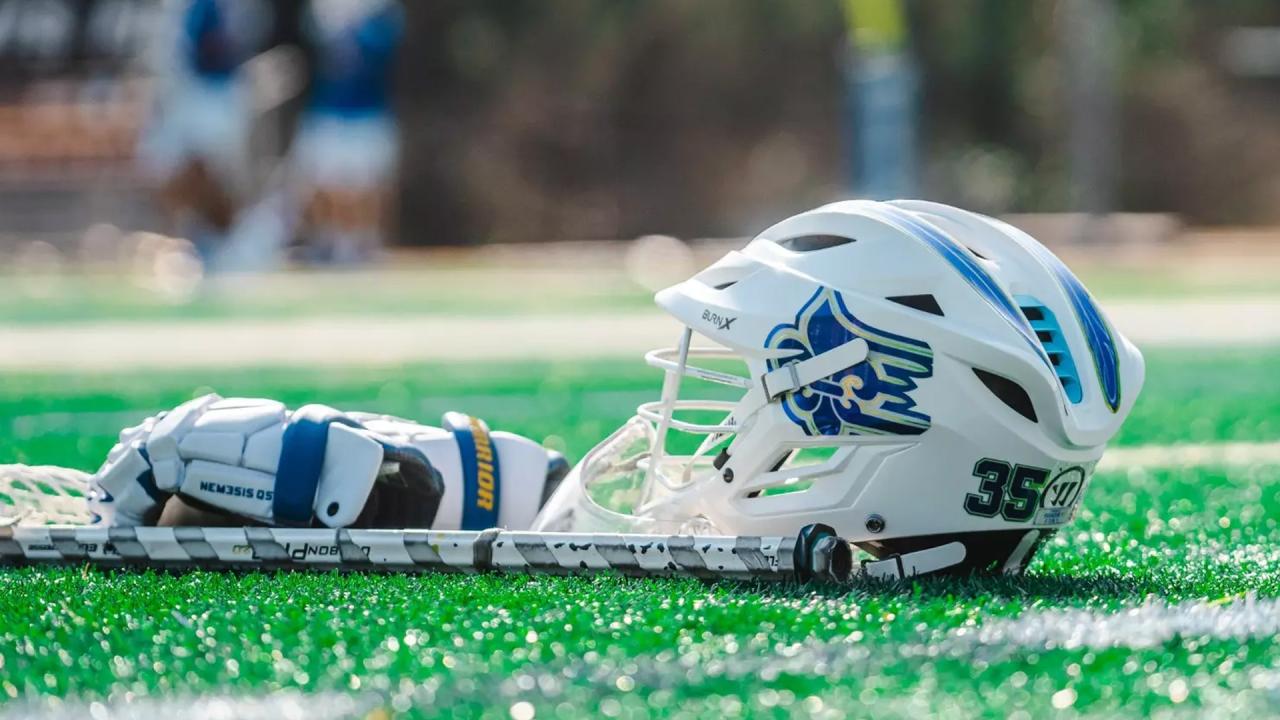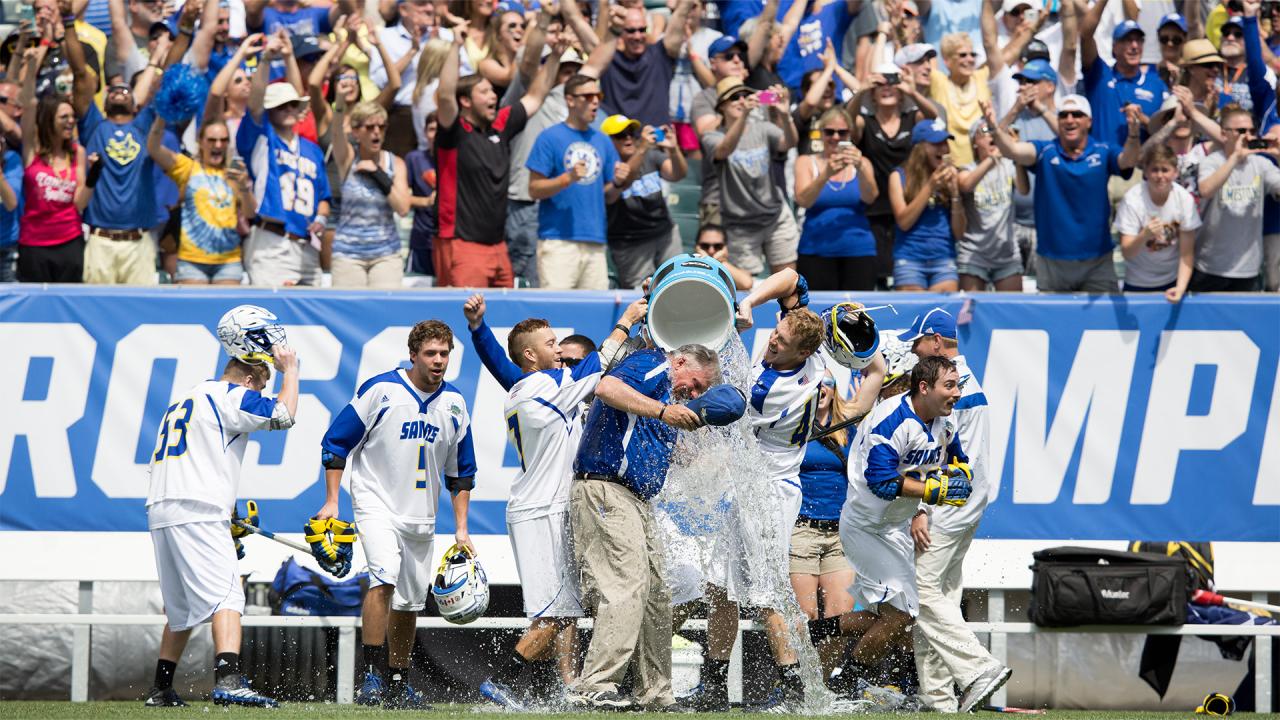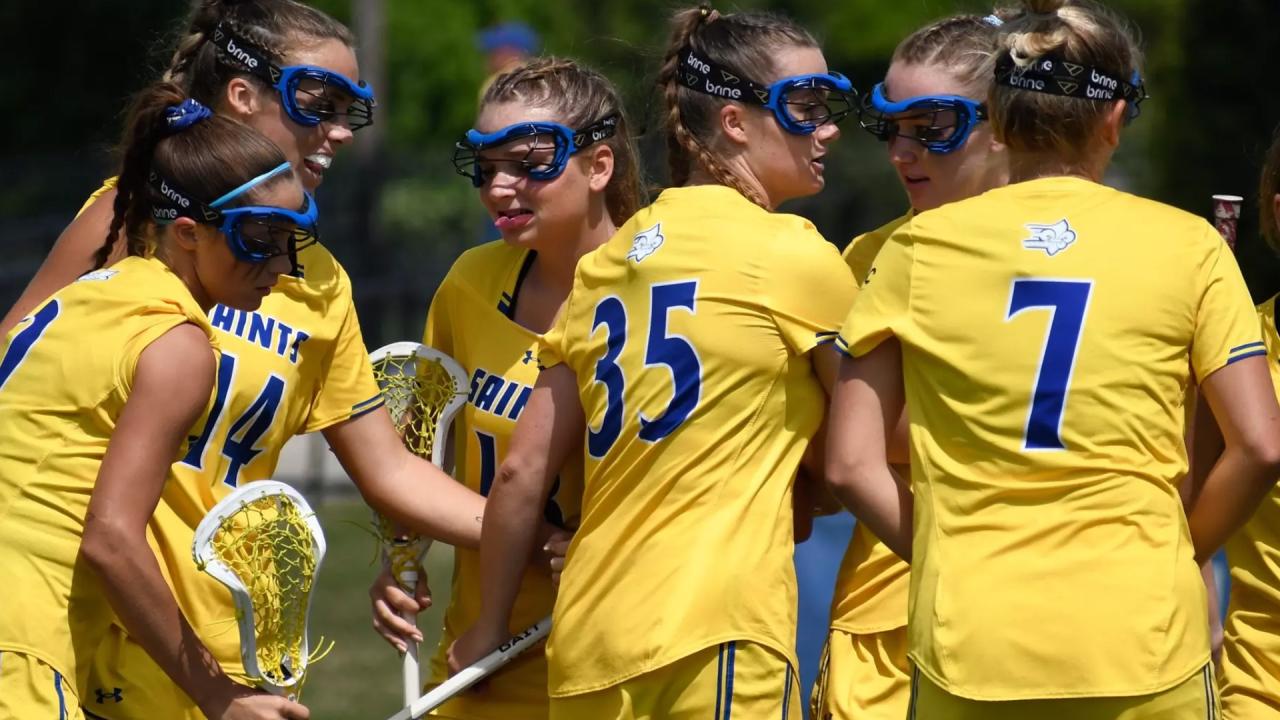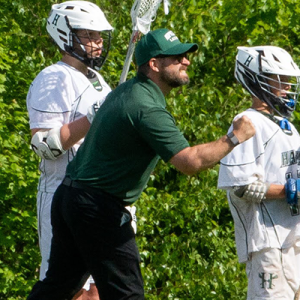
Limestone, Division II Lacrosse Will Always Be Inextricably Linked
Eulogies are sad. So, that’s not what this is going to be.
Contrary to the popular cliché, glory does not last forever, but legacy does. The legacy of Limestone University’s lacrosse programs dates back 35 years and is largely immeasurable. So, instead of focusing on the end of the school itself or trying to litigate why this has happened, it is more pertinent to look back and appreciate the impact that both the men’s and women's programs have had on the entire Division II landscape.
There is no better place to start than with former Limestone coach and athletic director Michael Cerino. Cerino, who some old-school pro lacrosse fans know as the head coach of the Charlotte Hounds, was named the head coach of the Limestone men’s lacrosse team in 1989, although it wasn't until 1992 that Division II lacrosse was reinstated by the NCAA.
Cerino’s team of Upstate New York and Long Island players expanded outward and grew into a southern staple over the next decade-plus, starting with the 1993 season.
“There are only three parts of the college world, Division I, II, and III,” Cerino said. “So, you can't be that instrumental in Division II lacrosse and not be historical in some way. In many ways, Limestone lacrosse grew up with Division II lacrosse. … I think you can see a direct correlation between Limestone’s growth athletically, and led by lacrosse, in Division II.”
Cerino, now working as the athletic director at Spartanburg Day School (S.C.), is keen to reflect upon the positive impact that Limestone has had on the D-II landscape at large.
“Things really took a leap in 2008, when Division II really solidified itself as its own entity away from Division I,” Cerino said. “We almost lost the national championship in 1999. Phil Buttafuoco [then executive director of the IMLCA] was very important in preventing that because men’s and women’s lacrosse was on the table to be discontinued in D-II, and I think we were instrumental in having the sport stay. It was an entire NCAA association vote. They overrode the recommendation and saved the men’s and women’s championships for 1999.”
The next season, Limestone won its first men’s lacrosse championship with a 10-9 victory over C.W. Post. The Saints went back to the title game for five straight years, winning their second title in 2002, 11-9 over New York Tech. All told, Limestone has appeared in 12 NCAA championship games as the winner of the southern region and won five titles.
The Saints have one last chance at another. They play Maryville on Sunday at 1 p.m. Eastern in the NCAA quarterfinals with a chance to go out in a blaze of glory.
Current Limestone head coach Brendan Storrier took over the program from legendary head coach J.B. Clarke, who was the architect of Limestone’s success from 2011-21, in 2022. He played for the Saints for two seasons after transferring from Onondaga Community College in 2008.
Storrier started as an assistant coach in Cerino’s final year and continued as an assistant for eight seasons. In that time, he was named the assistant coach of the year in Division II twice before departing to be the head coach at Mars Hill in the summer of 2018. He helped Limestone win three national championships and built his current staff with Saints alums and a specific intention.
“All the coaches on staff are alums; that’s something that is very special,” Storrier said. “It brings us really close to our players. We refer to Limestone as the best place in the world. We may not have the best this or the best that, but all in all, it is the best program in the country. We fully believe that. Everyone tells me ‘Sorry’ or ‘Sorry for what happened,’ and I get that, and I appreciate that, but I had the best four years of my life coaching this team. I got to work with guys I love. I got to coach with and recruit guys that love the same place that I love.”

The women’s program has also had an impressive legacy in the game. It has been led through most of its existence by current head coach Scott Tucker, who took over the program after Mike Scerbo left in 2001 after a 10-1 season.
Historically, the women’s program was not in a conference, but as the program grew, the college contributed more resources. The team kept winning games. So many games, in fact, that Tucker is closing in on 375 career victories and is second all-time in Division II to Ginny Martino’s 423 wins.
Tucker led the team to national championship game appearances in 2011 and 2013 but fell to Adelphi (17-4) and C.W. Post (10-7), respectively.
Throughout his tenure, Tucker was approached for nearly a decade by other programs. He rebuffed every offer to stay with the Saints. Schools then pivoted to asking him to send them his best assistants to start new women’s programs across the country.
“We’ve certainly had a number of assistants and players move on and get assistant and head jobs right out of the gate,” Tucker said. “We’ve placed them all over from Canada to Florida, Georgia. We’ve had them go all over. I’ve been fortunate to have a great staff, and they are certainly a big part of our success.”
Tucker, who has also served as a coach for the Canadian women’s national team and U19 teams, has helped turn Limestone into a destination program.
The Saints played top-seeded West Chester on Saturday at 3 p.m. in the second round of the NCAA tournament.
“During this time, I think we’ve had the realization of how many people support us from afar,” Tucker said. “We’ve reached other countries. We’ve had New Zealand players, a ton of Canadians. I think this goes beyond the States. Limestone has become a household name in Division II for sure.”

Cerino, reflecting on the history of the program, compared it to a certain Division III national power.
“You can’t tell the story of college lacrosse in the last 30 years without talking about Salisbury,” Cerino said. “The fact that we’re having this conversation about Limestone feels good because it matters. I think the thing I’m most proud of is the number of schools that play collegiate lacrosse in this region. In 1990, we were the only team in South Carolina. There were teams like Pfeiffer, Guilford and then North Carolina and Duke in Division I. Now look how many teams play lacrosse. [Former Limestone President] Dr. Walt Griffin always said that we were the little train that could.”
Tucker had a similar comparison.
“I’m from Upstate New York originally, and I think one of the big programs up there is Cortland,” Tucker said. “Cortland was always the team to beat when I coached at Oswego State for a few years, and they have remained the team to beat. Only recently have they not won their conference championship, but if I had to compare us to anyone, it would be Cortland. They have had a long run of conference championships.”
Storrier, whose team nearly hit the 30-goal mark in the opening game of the NCAA tournament against North Greenville on Wednesday, is now heading into what could be not only his final game as the head coach of Limestone, but the final game in the history of the program.
It’s a weight that doesn’t get lighter.
Somber but steady, he recalled what he would miss most about the program he played for and coached for so many years. It’s not the legacy that is left; it’s the things that have grown from the creation and evolution of the program that will endure. There isn’t a specific moment, player or interaction that Storrier can specifically recall to represent his time with the Limestone program.
“It’s hard to pick one thing. It all seeps in together,” Storrier said. “I don’t know. The greatest memories of my life are here. My kids are here. We’re all alums now, and this place is the best.”
That view of the place and the program being especially different conjures echoes from the past. Limestone is built on the pillars of its own gumption. Despite the school closing, there are plenty of things to learn from the history of Limestone, both athletically and academically.
“The men who had the vision to get the programs going, Dave Rilling and Walt Griffin, understood the value of a sport like lacrosse,” Cerino said. “They wanted more people from the Northeast on campus, they wanted the demographics to shift and create a more holistic feeling. That was emulated again when we added field hockey and men’s volleyball. It was to get different groups on campus and create a different setting that wasn't just a regional school where everyone came from a 50-mile radius.”
Limestone was truly about building — building a legacy in the south as a premier lacrosse destination and building people ready to tackle life’s challenges.
“What we used to say is that we don’t recruit All-Americans,” Cerino said. “We graduate All-Americans.”
This isn’t the sunsetting of a program. It’s the sunsetting on a mountainous block of Division II’s sporting history. A big part of why Limestone was well known was that it had two groundbreaking lacrosse programs as its foundation.
Programs across the country owe at least part of their existence to Limestone. It provided the blueprint of what it took to build successful lacrosse programs in a non-traditional area and grow them into national powers.
Kyle Devitte
Kyle Devitte played high school lacrosse at John Stark (N.H.) and Tilton Prep (N.H.) before embarking on a playing career at St. Michael's College and Clark University in the early aughts (oughts?). After graduating from Clark, he went on to coach lacrosse at NCAA Division II and III schools throughout New England for 12 years before becoming the Gear and Lifestyle Editor at Inside Lacrosse in 2014. He's the managing editor of the New England Lacrosse Journal and coaches at Hopkinton (N.H.) High School, where he helped the Hawks to a state championship in 2023.

Related Articles





